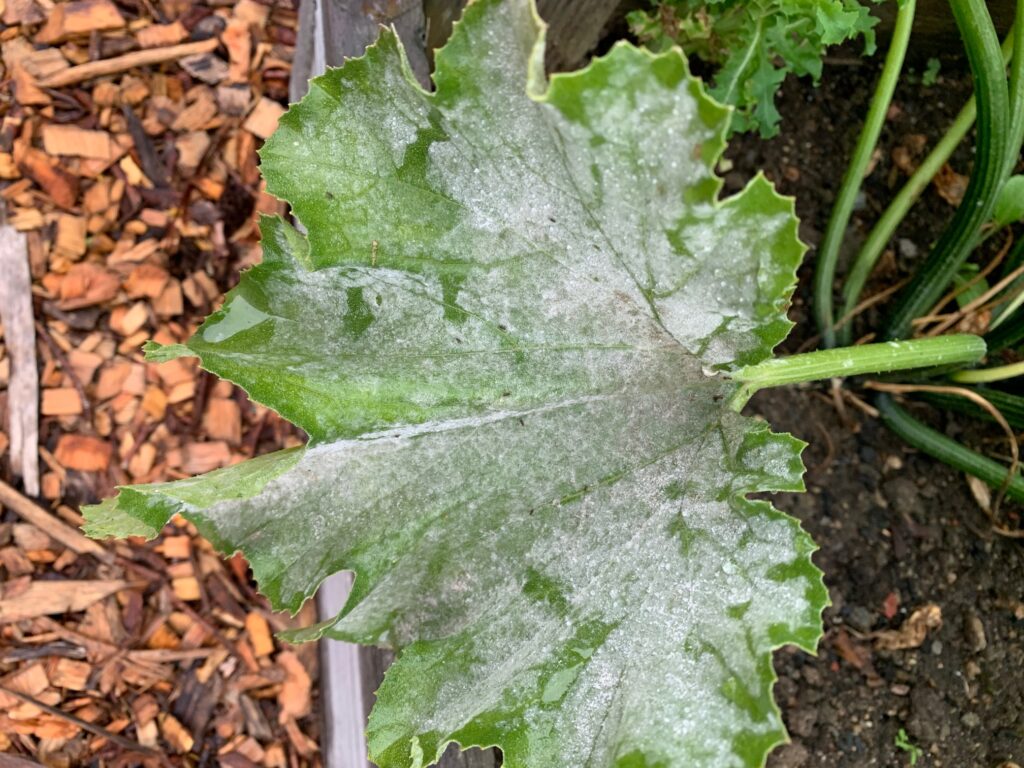Now is the season for squash, cucumbers and … powdery mildew! Powdery mildew can damage, even kill, your plants as sure as any insect infestation. Worse, it spreads in the air and water and lives in the soil. It is a fungus and looks like a flour dusting on the leaves of the plant.
While this fungus is relatively easy to prevent, if left untreated, it can cause the leaves to curl and turn brown and potentially kill buds that produce squash. And it is highly susceptible to spreading to other garden plots.
Conditions this year have been great for the fungus: high humidity and warm temperatures. However, sunlight is a good disinfectant as long as it can reach the leaves. If plants are too crowded or have many overlapping leaves the microclimate around the plant can be a breeding ground for the fungus.
Thinning the leaves to allow sunlight to reach the full plant can help, as well as increasing air circulation. Use shears to cut away contaminated leaves — be sure to discard in the trash, NOT the compost, because then it can infect the soil for next year!
One added benefit of thinning the leaves a bit is to expose the blooms of the plant to pollinators.
Baking soda is an excellent treatment for powdery mildew. Mix into a 32 oz spray bottle of water: 1 tsp baking soda, 1 tsp vegetable oil, 1/4 tsp dish soap. Shake the liquid to dissolve the baking soda and spray on and under your plant leaves and stems. Repeat after rain.
Alternatively, the neem oil in the planting shed is another excellent control for powdery mildew.

